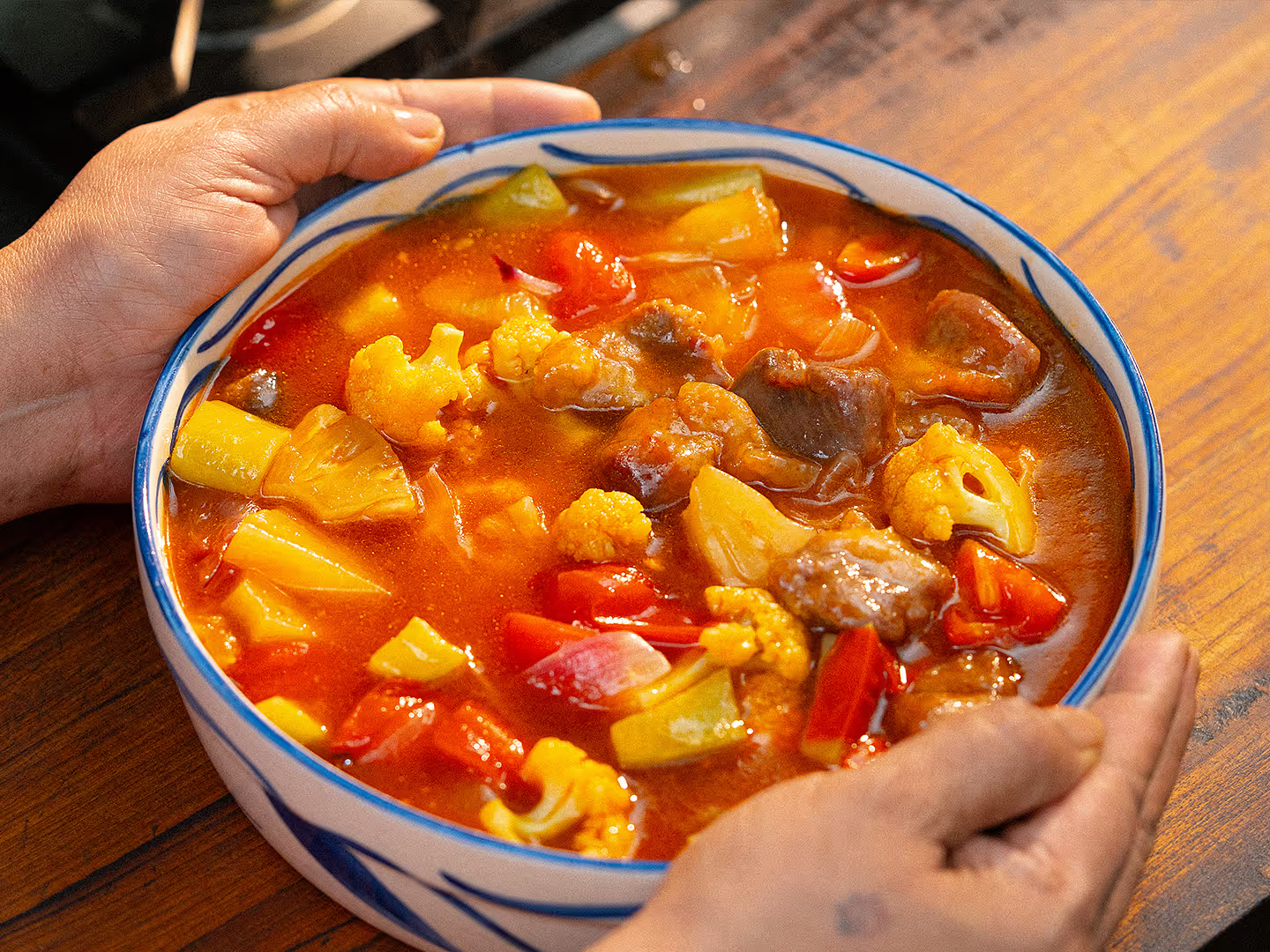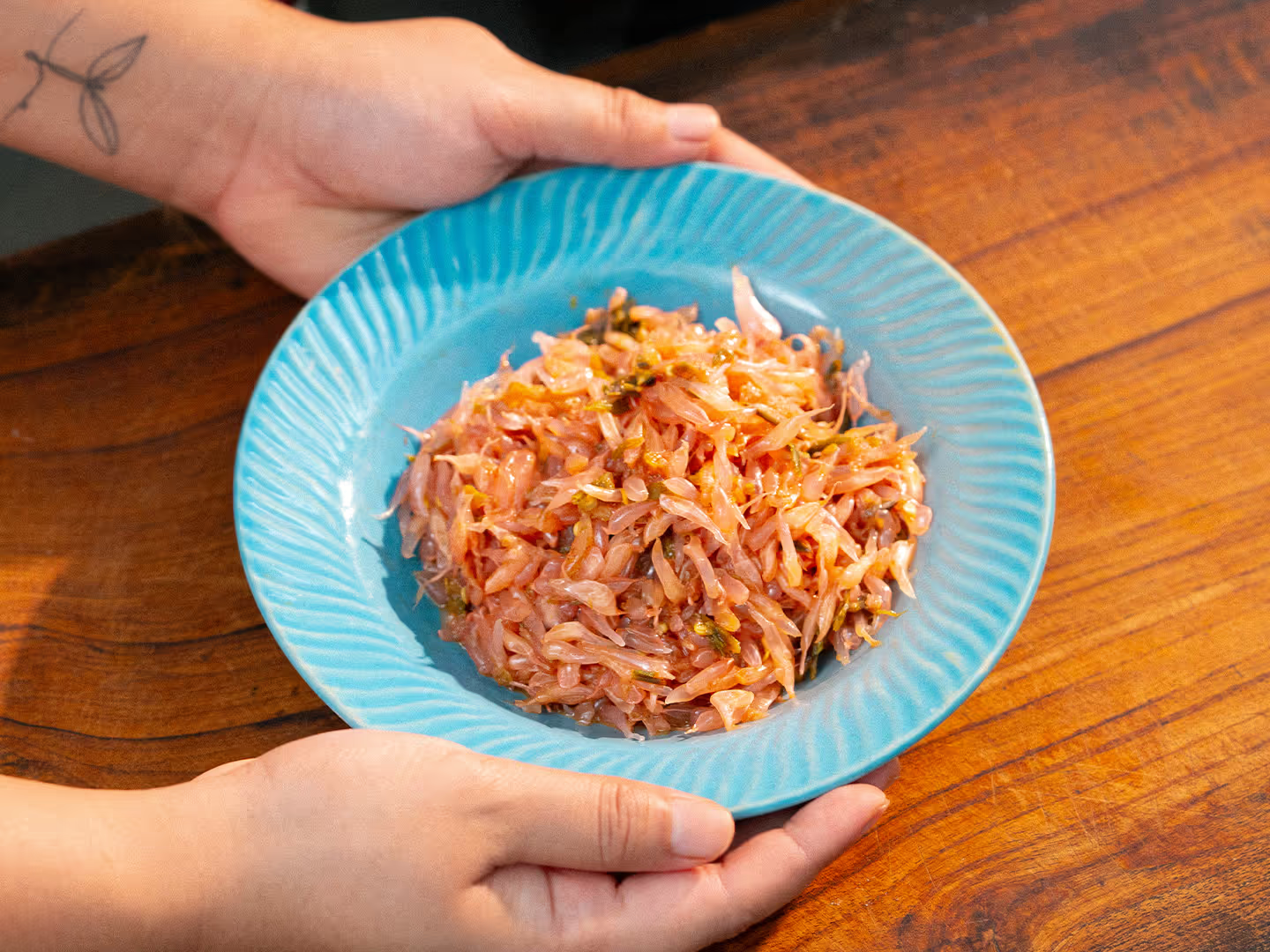Badhakopi’r Ghonto
A mildly spiced curried cabbage flavoured with ginger, garam masala and ghee.
- Cooking time45 minutes
- Calorieskcal
This is a beautifully spiced cabbage-and-peas preparation that is a little hot, a little sweet, and with hints of ginger, _ghee_, and _garam masala_.
Badhakopi’r ghonto is essentially prepared by steaming fine shreds of cabbage (about 2 mm wide) in their own moisture, which is drawn out with the help of salt. There are five important points to remember while cooking this dish—(1) The cabbage must be cut as finely as possible. Larger strips will not only take longer to cook, they will fail to give the badhakopi'r ghonto the desired texture; (2) Once you add the cabbage to the pan, don’t add any extra water; (3) Cook on low heat. This will ensure that the moisture extracted from the cabbage doesn't evaporate too quickly and cause the cabbage to stick to the pan; (4) Always cover the pan with a lid. This will also prevent the moisture generated by the cabbage from evaporating too quickly; (5) Stir intermittently to prevent sticking.
Frequently Asked Questions
Books in this recipe
Ingredients
- 15 g mustard oil
- 1 piece dried red chilli (whole)
- 1 piece bay leaf (whole)
- 1 piece cardamom (whole)
- 1 piece clove (whole)
- 1 piece cinnamon (whole)
- 2 g (or ¼ tsp) cumin seeds
- 400 g cabbage (cut into thin shreds, 2 mm wide)
- 100 g potatoes (diced; 3 cm cubes)
- 50 g peas (shelled)
- 30 g tomatoes (diced)
- 75 g prawns (optional; shelled and deveined)
- 20 g ginger paste
- 2 g cumin powder
- 1 g coriander powder
- 3 g turmeric powder
- 1 g red chilli powder
- 10 g salt
- 25 g sugar
- 4 g ghee
- ¼ tsp garam masala powder
- 2 pieces green chillies (slit)
Method
PART I—CUTTING THE CABBAGE
- Cut the cabbage into the thinnest possible shreds that you can manage. To make this process easier, deal with the vegetable in sections of 5 cm each. Take a segment, one at a time, and shave off shreds along its cross-section with your knife. Take your time with the cutting, because the outcome of the dish will depend on this step. Watch this video, which shows you how to cut cabbage for badhakopi'r ghonto.
PART II—TEMPERING THE OIL (PHORON)
- Heat 15 g mustard oil in a pan till it begins to smoke.
- Add the phoron(comprising the dried red chilli, bay leaf, cardamom, cinnamon, clove, and cumin seeds) to the oil.
- Once the spices start crackling, add in the cubed potatoes.
- Fry the potatoes for 3 minutes on low heat, with the lid on.
PART III—SAUTEEING THE SPICES
- Make a paste by mixing together the ginger paste, cumin powder, coriander powder, turmeric powder, red chilli powder, and 80 g of water.
- Add this mixture to the potatoes and cook on medium heat till the water dries off.
- Add in the diced tomatoes and shelled peas.
- Then, add another 80 g of water and sauté the spices till the water dries off.
- Add a slit green chilli and cook with the lid on for another minute.
PART IV—STEAMING THE CABBAGE
- Add the shredded cabbage to the pan, along with the salt.
- Fold in the spices and cook on low heat with the lid on. The salt will start dehydrating the cabbage and drawing out its moisture.
- Steam the cabbage on low heat, with the lid on, for 12 minutes, stirring intermittently. Keep an eye on the pan to ensure that the cabbage doesn’t stick to the bottom.
- Add the sugar and cook for another 15 minutes, stirring intermittently. The sugar will soon start to caramelise. Be sure to scrape down and integrate the lightly browned bits of the torkari that stick to the bottom of your pan (they are yummy!).
- This step is optional. You can coat a couple of cleaned prawns in a pinch of salt and turmeric powder, and fry in a separate pan for 30 seconds on each side. Chop the fried prawns in chunks of 1 cm, and add to the ghonto.
- Garnish with ghee, powdered garam masala, and a slit green chilli.





























